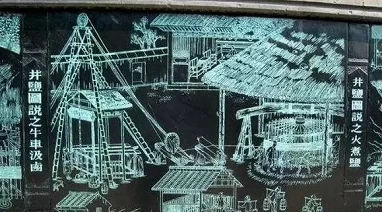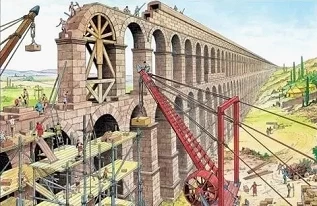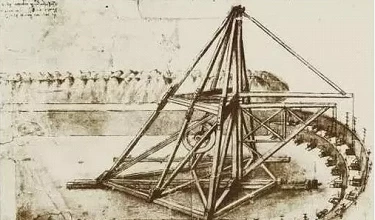The brief origin and history of the valve
Speaking of valves, it is believed that many people are not unfamiliar. Yes, the use of valves touches every day in our lives. When we turn on the faucet to drink water or open the fire hydrant to water the farmland, we are carrying out the valve Interactions, densely staggered pipelines, and various valves are behind it.
The development of valves is closely related to the development of industrial production processes. In ancient times, in order to regulate the flow of water in rivers or streams, people used large stones or tree trunks to stop the flow of water or change the direction of water flow. As early as the end of the Warring States Period, Li Bing, the eunuch of Qin Shu County, had dug salt wells in the Chengdu Plain. When taking the brine, use thin bamboo as the brine extraction tube. Inside the casing of the halogen tube, use the cooked leather as the opening and closing valve. One cylinder can be used to draw several halogens. A large wooden stand is set up on the well. Install a wooden plunger valve at one end to prevent leakage. Put the brine in the well to make salt ---- is the ancients very talented!

Well salt brine
Egyptian and Greek civilizations invented several primitive valve types for crop irrigation and more. However, it is generally accepted that the ancient Romans developed a rather complex water system for crop irrigation, using plug valves and plunger valves, and using check valves to prevent backflow of water.

The complex water system of ancient Rome
During the Renaissance, valves were used in the trenches, irrigation projects, and other large hydraulic system projects designed by the artist and inventor Da Vinci, and many of his technical solutions still exist today. Did you know that Da Vinci was a great painter? I didn't expect him to make such a great contribution to the valve.
Subsequently, because of the development of exercise technology and hydraulic machinery in Europe, the requirements for valves also gradually increased. Therefore, copper and aluminum plug valves were created before the valves were made of metal.


Da Vinci manuscript illustration
The modern history of the valve industry goes hand in hand with the industrial revolution, which goes deeper with the deepening of the industrial revolution. In 1705 Newcomman invented the first industrial steam engine, which put forward control requirements for the operation of the steam engine. In 1769, Watt created the steam engine to officially enter the valve industry. Many steam engines use plug valves, safety valves, check valves and butterfly valves.Some control valves relay on power plant high pressure spray water angle control valve factory nowdays.
Watt's invention of the steam engine was the beginning of a large number of applications in the valve industry. From the 18th century to the 19th century, the rapid promotion of steam engines in the mining industry, exercise, textile, machinery manufacturing and other industries, increasing the number and quality of valves, so the slide valve was presented. He also invented the first controller to regulate the speed, and since then, more and more attention has been paid to the control of fluid flow. The successively presented globe valve with threaded stem and wedge gate valve with trapezoidal threaded stem are a major breakthrough in the development of the valve. The presentation of these two types of valves not only satisfied with the increasing requirements of valve pressure and temperature in various industries at that time, but also initially satisfied the requirements for flow regulation.

Watt and his steam engine
The first real valve in history should in principle be a ball valve or a ball plug valve, dating back to the design of John.Wallen and John.Charpmen in the 19th century , but it was not put into production at that time.
After World War II, the development of the valve was completed with the promotion of the government, and the US Navy was an early proponent of James Bury valves for submarines. Therefore, a series of new R & D and attempts were carried out around the scene of valve use. The new valve technology has also undergone new innovations with the war.

Standard non-return valve used in warship
Due to the need for post-war reconstruction in many countries, and because of various special materials, including aggregated materials, smooth materials, and the development of stainless steel and cobalt-based hard alloys, old plug valves and butterfly valves have been newly used, and they are based on the evolution of plug valves. The ball and diaphragm valves were quickly deployed. Stop valves, gate valves and other valve types are added for quality improvement. Make the valve manufacturing industry gradually become an important sector of the machinery industry.
In the 1960s, the economies of developed industrialized countries successively moved toward a period of prosperity and development. The products of the former West Germany, Japan, Italy, France, Britain and other countries were anxious to find the international market, and the export of complete sets of machinery and equipment led to the export of valves. From the late 1960s to the early 1980s, the old colonial countries became independent, eager to develop national industries and imported a large number of equipment, including valves; and the oil crisis caused various oil-producing countries to invest heavily in high-profit petroleum industries. These series of reasons make the international valve production trade and development usher in a period of rapid growth, and further promote the development of the valve industry.
China's valve industry started late. In the 1960s, it began to develop products such as single-seat valves and double-seat valves, mainly imitating the products of the former Soviet Union. Due to the backwardness of the machinery industry, the machining accuracy is low. Therefore, the amount of product leakage is large, but it can still meet the general control requirements of the industrial production process at that time.
Since the 1970s, with the expansion of industrial production scale and the increase of industrial process control requirements, some regulating valve products have been unable to meet the requirements of production process control, such as the control requirements for high pressure, high pressure drop, low temperature, high temperature and corrosive media. For this reason, some large petrochemical companies also introduced some control valves, such as sleeve valves with balanced spools, eccentric rotary valves, etc., while introducing equipment, which pointed out the development direction for domestic control valve manufacturers. Therefore, in the late 1970s, some manufacturers have begun to imitate products such as eccentric rotary valves.
Beginning in the 1980s, with the implementation and implementation of China's reform and opening-up policy, we began to organize key enterprises to introduce advanced technologies and processing equipment, such as the design and technology of similar products from foreign valves, so that China's valve manufacturing technology and product quality have improved rapidly. For example, various types of sleeve valves and eccentric rotary valves have been produced, and development of fine and small regulating valves has begun. With the progress of large-scale power stations and other industrial projects, various electro-hydraulic actuators and long-stroke actuators have also been developed to meet the control requirements of large thrust and large thrust torque and long stroke.
In the 1990s, China's control valve industry also began to develop rapidly after introducing and digesting foreign advanced technologies, filling some gaps in special industrial control, improving the level of China's control valve industry, and closing the gap with foreign countries.
At present, domestic key valve production enterprises have been able to design and manufacture various valves according to ISO international standards, DIN German standards, AWWA American standards and other international standards, and some manufacturers' products have reached international advanced levels.
We can say so if we briefly outline the industrial product of valves.
The valve is a control component in the pipeline transportation system, from the simplest globe valve to a variety of valves used in extremely complex automatic control systems, including ball valves, butterfly valves, gate valves, globe valves, check valves, conditioning valves, safety valves, rotary plug valve, diaphragm valve. The valve can be used to control the flow of various types of fluids such as air, water, steam, various corrosive media, muds, oils, liquid metals and radioactive media. Regarding the distribution of the valve market, it is mainly based on the construction of engineering projects. The largest users of valves are the petrochemical industry, the power sector, the metallurgical sector, the chemical industry and the urban construction sector, such as urban water pipes, building construction, and urban heating; , Pharmaceutical industry, food industry, etc. Valves are widely used in the water treatment industry. They are mainly low-pressure valve products, such as butterfly valves, gate valves, and check valves.
 +86 512 68781993
+86 512 68781993 


















